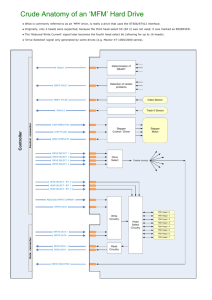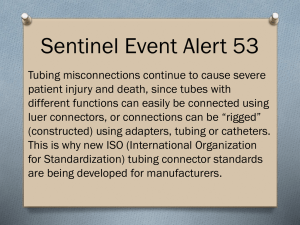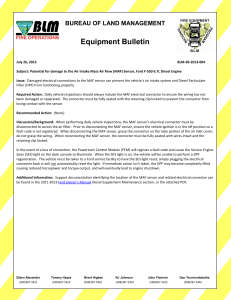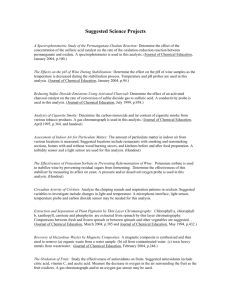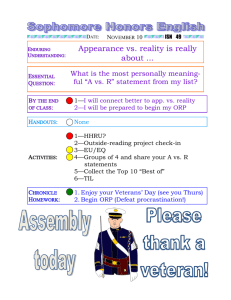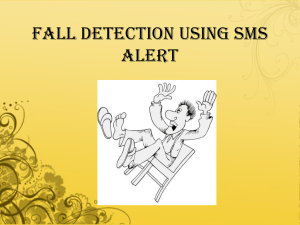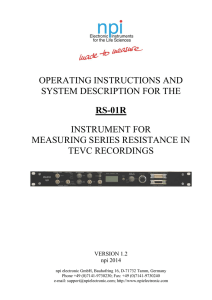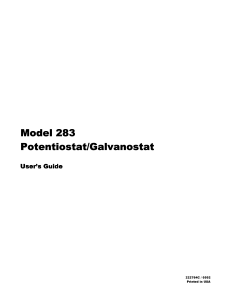Chemistry Sensor
advertisement
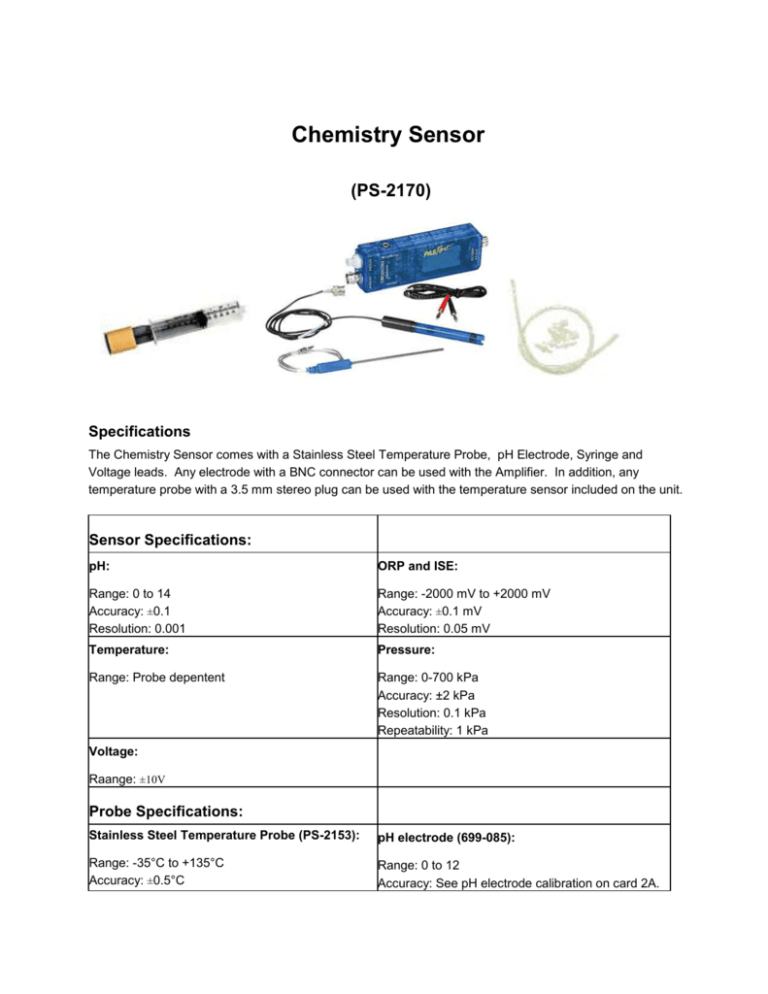
Chemistry Sensor (PS-2170) Specifications The Chemistry Sensor comes with a Stainless Steel Temperature Probe, pH Electrode, Syringe and Voltage leads. Any electrode with a BNC connector can be used with the Amplifier. In addition, any temperature probe with a 3.5 mm stereo plug can be used with the temperature sensor included on the unit. Sensor Specifications: pH: ORP and ISE: Range: 0 to 14 Accuracy: ±0.1 Resolution: 0.001 Range: -2000 mV to +2000 mV Accuracy: ±0.1 mV Resolution: 0.05 mV Temperature: Pressure: Range: Probe depentent Range: 0-700 kPa Accuracy: ±2 kPa Resolution: 0.1 kPa Repeatability: 1 kPa Voltage: Raange: ±10V Probe Specifications: Stainless Steel Temperature Probe (PS-2153): pH electrode (699-085): Range: -35°C to +135°C Accuracy: ±0.5°C Range: 0 to 12 Accuracy: See pH electrode calibration on card 2A. Resolution: 0.0025°C Repeatability: 0.1°C Resolution: 0.001 Temperature range: 0°C to +80°C Construction: Double junction, electrode with threefoot cable and BNC connector. Reference is gelfilled. ORP and ISE: Varies by electrode. Refer to sensor-specific manuals for more information. Calibration The Amplifier does not require calibration. Refer to the pages on the pH, ORP and ISE electrodes and to the pages on the Temperature Sensors for specific calibration instructions. Common Equipment Setup The PASPORT Chemistry Sensor is designed to operate with any ion-selective electrode, pH and oxidation reduction potential electrodes. In addition, the PASPORT Chemistry Sensor works with the PASPORT FastResponse, Stainless Steel, and Skin/Surface Temperature probes. To connect the pH, ORP, or ISE electrode to the amplifier, use the BNC port. To connect the temperature probes, use the 3.5mm stereo connector. Tubing setup Put a drop of glycerin on the barb end of a quick-release coupler. Put the end of the coupler into one end of a short piece (about 15 cm) of plastic tubing that comes with the PASPORT Chemistry Sensor. Put a drop of glycerin on the barb end of the other type of plastic connector that comes with the sensor. Push the barb end of the connector into the other end of the tubing. Fit the end of the connector into the onehole rubber stopper. Push the rubber stopper firmly into the air chamber (flask, test tube, etc.). Align the quick-release connector on one end of the plastic tubing with the pressure port of the Pressure Sensor. Push the connector onto the port, and then turn the connector clockwise until it clicks (about oneeighth turn). Typical Applications Titrations (acid-base, potentiometric) • pH and temperature studies • Gas Law measurements • Direct measurement of ion concentrations • Solubility investigations • Oxidation-reduction potential investigations

